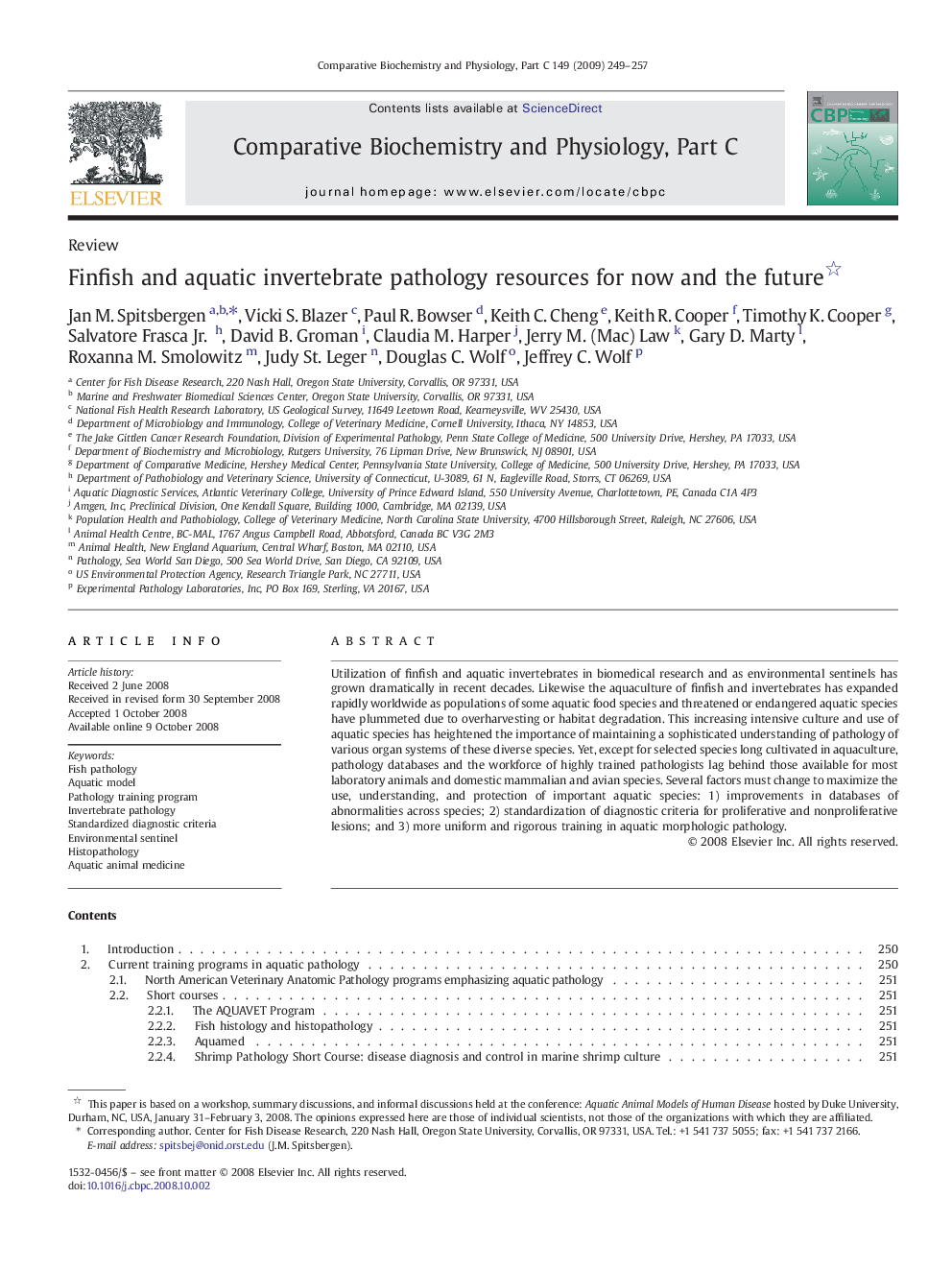| Article ID | Journal | Published Year | Pages | File Type |
|---|---|---|---|---|
| 1977520 | Comparative Biochemistry and Physiology Part C: Toxicology & Pharmacology | 2009 | 9 Pages |
Utilization of finfish and aquatic invertebrates in biomedical research and as environmental sentinels has grown dramatically in recent decades. Likewise the aquaculture of finfish and invertebrates has expanded rapidly worldwide as populations of some aquatic food species and threatened or endangered aquatic species have plummeted due to overharvesting or habitat degradation. This increasing intensive culture and use of aquatic species has heightened the importance of maintaining a sophisticated understanding of pathology of various organ systems of these diverse species. Yet, except for selected species long cultivated in aquaculture, pathology databases and the workforce of highly trained pathologists lag behind those available for most laboratory animals and domestic mammalian and avian species. Several factors must change to maximize the use, understanding, and protection of important aquatic species: 1) improvements in databases of abnormalities across species; 2) standardization of diagnostic criteria for proliferative and nonproliferative lesions; and 3) more uniform and rigorous training in aquatic morphologic pathology.
